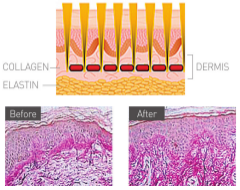

In China, variolation was frequently performed by inoculation of the nasal mucosa.
#Skin deep oxford al skin
Skin inoculation with a small amount of fresh pustule fluid, likely to have contained large numbers of infectious virions, produced a local lesion with satellite pustules, but generalized rash was reported to be less severe and mortality rates were usually 10-fold lower than with naturally acquired disease ( Fenner et al., 1988). Jenner himself was variolated as a child. Prior to Jenner, variolation, ( Fenner et al., 1988) inoculation of variola into the skin or nasal mucosa, was used to reduce the risk of smallpox. This paper reviews the evidence for each of these modes of transmission. Unfortunately, leading authorities disagree regarding the relative importance of fine and large particle routes of transmission some state that smallpox was transmitted primarily via airborne droplet nuclei, ( Henderson et al., 1999) while others emphasize “face-to-face” contact and state that, airborne transmission was rare ( Centers for Disease Control, 2002 Mack, 2003). If, however, smallpox was frequently transmitted from person-to-person by airborne droplet nuclei then mechanically recirculated air systems would increase the contact rate, R 0, the risk of epidemic spread, and the difficulty of hospital infection control. If smallpox was almost entirely transmitted by mucosal contact with large droplets (aerodynamic diameters >10 μm), which can only occur following “face-to-face” exposure over distances of a few feet, then change in the built environment would not change the contact rate between individuals. A potentially important difference between contemporary environments and those used to estimate R 0 is that today many buildings, including hospitals, mechanically recirculate air.

Because R 0 is a function of the contact rate between individuals, it can be affected by changes in the environment ( Anderson and May, 1991).

The basic reproductive number (R 0), which describes the tendency of a disease to spread, has been estimated for smallpox from historical data and outbreaks in developing countries ( Gani and Leach, 2001 Eichner and Dietz, 2003). The rapidity with which smallpox would spread in a developed nation is not known and is a major source of uncertainty in models used for public health planning ( Ferguson et al., 2003). Infectious disease modeling plays an important role in this dialog, and the biology of the transmission pathway, the focus of this review, is critical to producing appropriate predictive models and understanding which controls will work best under varying conditions ( Ferguson et al., 2003). I introduce briefly the term anisotropic infection to describe the behavior of Variola major in which route of infection appears to have altered the severity of disease.Ĭontroversy exists regarding the best method of protecting the public against the potential release of smallpox as a biological weapon ( Bicknell, 2002 Fauci, 2002 Halloran et al., 2002 Kaplan et al., 2002 Mack, 2003). This review examines evidence from the history of variolation, data on mucosal infection collected in the last decades of smallpox transmission, aerosol measurements, animal models, reports of smallpox lung among healthcare workers, and the epidemiology of smallpox regarding the potential importance of fine particle aerosol mediated transmission. Although, “respiratory droplet” transmission was generally regarded as the primary mode of transmission, the relative importance of large ballistic droplets and fine particle aerosols that remain suspended in air for more than a few seconds was never resolved. The mode of smallpox transmission was never conclusively established. The mode of infection transmission has profound implications for effective containment by public health interventions. 3Department of Environmental Health, Harvard School of Public Health, Boston, MA, USA.2Department of Medicine, University of Maryland School of Medicine, Baltimore, MD, USA.1Maryland Institute for Applied Environmental Health, School of Public Health, University of Maryland, College Park, MD, USA.


 0 kommentar(er)
0 kommentar(er)
